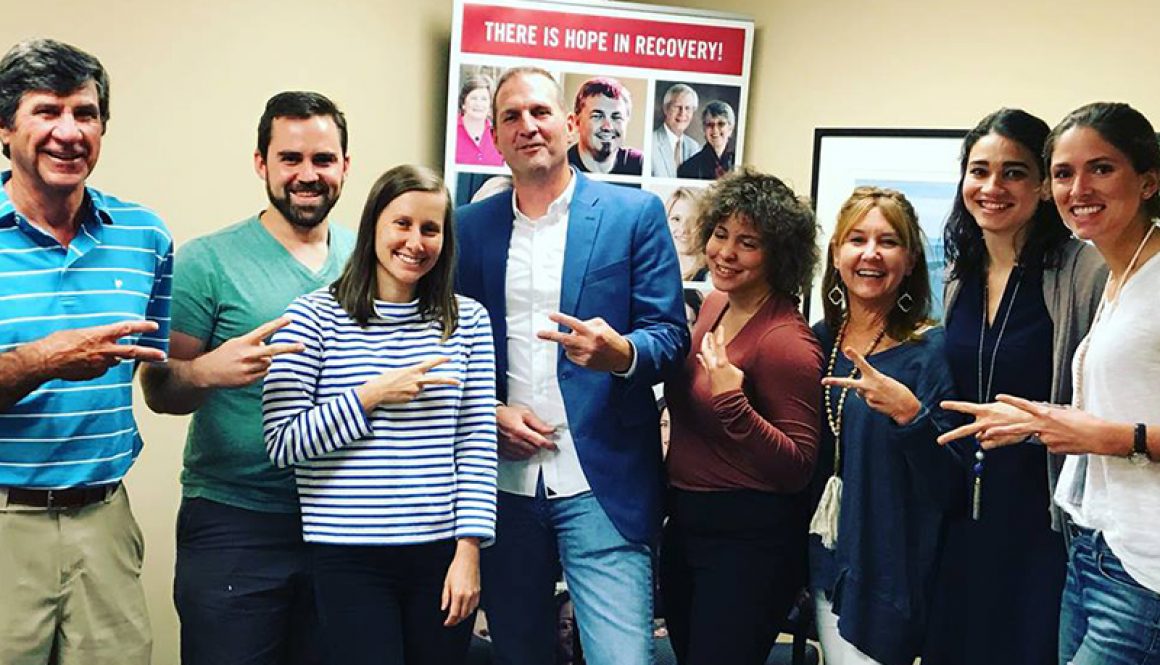Treatment For ALL Substance Use Disorders
Substance Use Disorders & The “Crisis”
Some of my favorite people in the world pictured above. This crew is part of our first cohort of medical students trained as recovery coaches with the University of South Carolina School of Medicine Greenville – in June of 2017. Here they learn about addiction and come to understand that Substance Use Disorders have different variations or severity indicators. They are classed as mild, moderate, or severe.
But before we sign off on the “more access to treatment” narrative, we should think this “addiction crisis” through a little bit.
When we say 10% of people in America need help with a substance use disorder this does NOT mean 10% of people in America are “addicted”.
Not A Medical Term
The word “addicted” is not even a medical term. The terminology is “substance use disorder”, and as mentioned above, it ranges in severity from mild to moderate to severe.
The closest terminology to “addiction” would be “SUD severe”.
Clearly, substance use is a disorder that should be treated across the spectrum, from mild to severe.
However, we tend to focus only on the severe part of the spectrum.
The mild and moderate folks are essentially ignored until they become severe; and even then only a fraction of the severe group ever seek help.
Treatment Mismatch
This creates a treatment mismatch. Over time we have developed practices to serve this exceedingly small slice of the substance use disorder pie. Those with “severe” disorders who actually show up for treatment.
Nearly every traditional service is inappropriate for those in the “mild” category.
Moderate conditions may be a better fit but many times this is also a treatment mismatch.
People are placed into the existing stream of care regardless of their particular needs.
SUD support services are not client centered because they can’t make the business work; and you can’t help people if you are out of business.
REALTALK:
The business model drives client placement and the provider has no choice but to “fit” the patient into the model that is reimbursed.
Putting someone who meets criteria for “mild” into rehab or intensive outpatient groups will cause more harm than good.
The same could probably be said for those in the “moderate” range. They can’t relate. They are less likely to follow through on recommendations.
The label “treatment resistant” will be placed on the person as they struggle to make sense of this bizarre situation.
The Resistant Label
I have seen this first hand with the college athletes in my practice.
They make a mistake or use bad judgement and they are hit with a positive urine drug screen.
Then they go for an assessment at a local “drug and alcohol clinic”.
They are then pigeonholed into programming that makes the situation much worse.
For example, they are place into intensive outpatient groups.
The groups take them away from the most positive group in their life: the team.
They will be labeled resistant if they don’t come to group and held accountable. That is totally Ridiculous!
A New Programming Model
Fortunately, the schools I work with are amenable to innovative thinking.
This is primarily a payer issue to fix. They could make this different overnight.
If there was willingness to make some bold moves.
No treatment provider is going to make a move until we have a business model that supports a new programming model.
Excessive Juuling – ???
I saw an article the other day where a teenager was sent to “rehab” for excessive use of his “Juul”.
I’m sure that excessive “juuling” can be dangerous but it is not appropriate to roll this kid through inpatient.
Maybe the article was fake news. I never know. Things are so outrageous.
The Medical Process
If we nest addiction treatment in healthcare it is much more likely the mild and moderate issues will be addressed.
If we can make it a routine part of the medical process.
The healthcare system will still need to send people with “SUD severe” for specialty care.
100% & 5%
There will always be a need for rehab. Just not so many destination rehabs (that’s a secondary gain from the shift). More community based services and more local treatment.
We can not rely on the paradigm and practices that come out of working with the most severe to guide our work with the entire SUD population.
We are basing 100% of our model on 5% (at best) of the problem.

